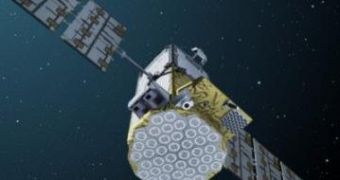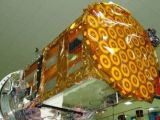The second demonstrator spacecraft for Galileo, Giove-B, has been scheduled by the European Space Agency to launch somewhere in late April, in order to test key technologies to be used in the Galileo project. The main goal the European Union is hoping to achieve with the launch of the Galileo spacecraft is to create a satellite that would compete with the American Global Positioning Satellite and reduce the EU's dependency on the GPS technology by having one of its own.
Amongst the instruments to be tested with the launch of the Giove-B spacecraft, there will be one of the most precise atomic clocks ever created, a hydrogen maser - microwave amplification by stimulated emission of radiation, a type of laser using microwave instead of optical light - which will have the role to keep time with an error of a billionth of a second every 24 hours. It is hoped that with the launch of the Galileo satellite - somewhere around 2013 - a multi-billion Euro industry will spawn, using receivers that communicate directly with the spacecraft, such as mobile phone and GPS-like guiding systems.
Giove-B is basically the acronym for Galileo In-Orbit Validation Element. Its twin, Giove-A, has been launched on the last days of 2005 and was carrying, amongst other instruments, two rubidium atomic clocks. The tests on Giove-A have worked flawlessly during its two-year circular orbit around Earth. But, the same thing cannot be said about Giove-B which has been delayed for launch due to problems with certain components during construction.
While the Giove-A test satellite was built by Surrey Satellite Technology Limited, Giove-B has been assembled by the Astrium GmbH consortium in collaboration with Thales Alenia Space and Telespazio. If all goes well and the spacecraft launches in April as scheduled, tests should begin as soon as the month of May. Also to be tested, aside the ultra-accurate atomic clock, is the signal generation unit which processes the data in order to send feedback right back at the receivers on Earth.
The processed signal will be amplified and converted into three frequency bands to serve multiple applications. In 2007, the Galileo project almost came to a halt due to the collapse of one of the subcontractors selected to operate the system. Just to keep the project running, the EU had to allocate 3.4 billion Euro in funding.

 14 DAY TRIAL //
14 DAY TRIAL // 
